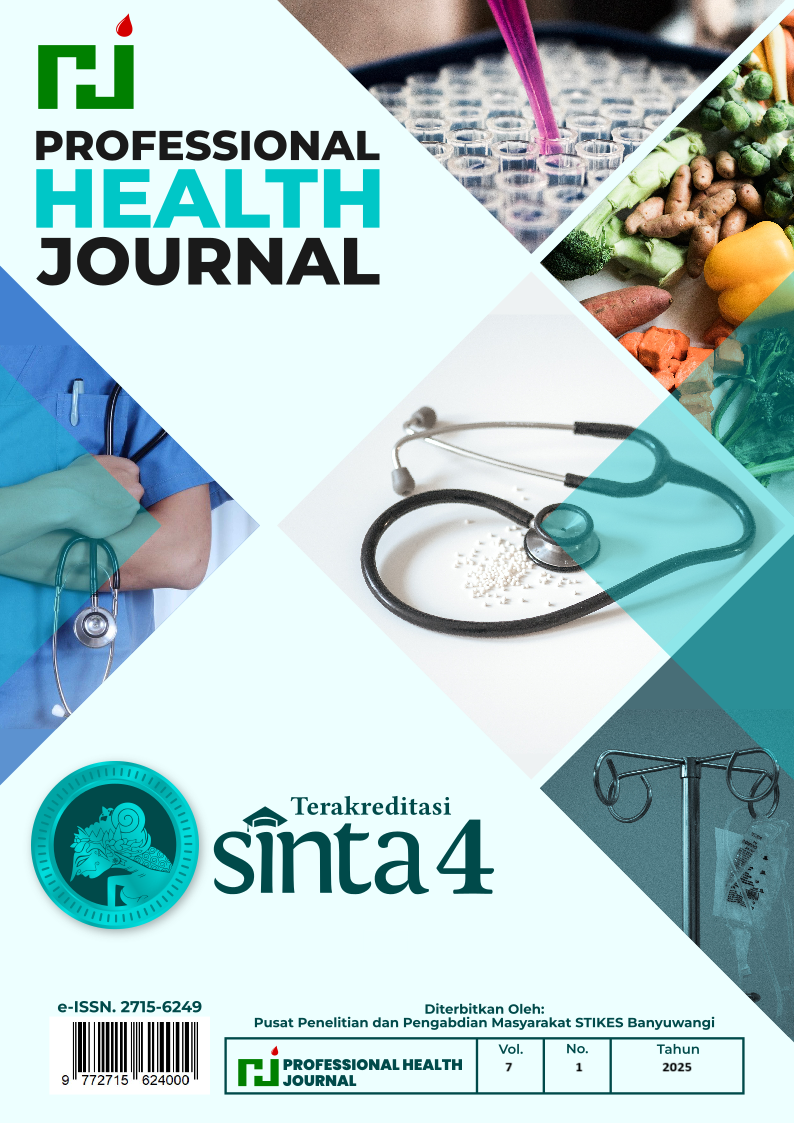The Relationship of Exposure to Plastic Food and Beverage Packaging on The Severity Stadium of Endometriosis at Dr. Soetomo General Hospital Surabaya
DOI:
https://doi.org/10.54832/phj.v7i1.1004Keywords:
Plastics BPA Phthalates EDCEndometriosisAbstract
Introduction: Endometriosis is a gynecological problem which is one of the main causes of secondary dysmenorrhea with pathological conditions. Endometriosis is defined as a disorder characterized by the presence of tissue similar to the endometrial layer growing outside the uterus which occurs in women of reproductive age. Bisphenol A (BPA) and phthalates are two substances found in food and beverage plastics that may be endocrine disrupting chemicals (EDC). Hormonal system abnormalities are intimately linked to endometriosis. Objectives: This study aims to prove the relationship between exposure to food and drink plastic and the stage of endometriosis. Methods: The design of this research is observational analytics with a retrospective approach. The sampling technique used non-probability sampling with a consecutive sampling approach of 96 respondents. Data analysis used the chi square test. Results: The research results showed that 65.63% (63) of respondents experienced moderate levels of exposure to plastic food and drinks. As many as 34.38% (33) of respondents experienced stage IV (severe) endometriosis. The results of the correlation between exposure to plastic food and drinks and the stage of endometriosis showed p value = 0.042. Conclusions: There is a significant relationship between exposure to food and drink plastic and the stage of endometriosis at Dr. Soetomo General Hospital Surabaya
Downloads
References
Anne, B., & Raphael, R. (2021). Endocrine Disruptor Chemicals. Journal of Occupational & Environmental Medicine, 39(4), 358. https://doi.org/10.1097/00043764-199704000-00035
Cimmino, I., Fiory, F., Perruolo, G., Miele, C., Beguinot, F., Formisano, P., & Oriente, F. (2020). Potential Mechanisms of Bisphenol A (BPA) Contributing to Human Disease. International Journal of Molecular Sciences 2020, Vol. 21, Page 5761, 21(16), 5761. https://doi.org/10.3390/IJMS21165761
Dutta, S., Banu, S. K., & Arosh, J. A. (2023). Endocrine disruptors and endometriosis. Reproductive Toxicology, 115(March 2022), 56–73. https://doi.org/10.1016/j.reprotox.2022.11.007
Hendarto, H. (2015). Buku Endometriosis aspek teori dan penanganan klinis. In Airlangga University Press.
Kim, S. H., Chun, S., Jang, J. Y., Chae, H. D., Kim, C. H., & Kang, B. M. (2011). Increased plasma levels of phthalate esters in women with advanced-stage endometriosis: A prospective case-control study. Fertility and Sterility, 95(1), 357–359. https://doi.org/10.1016/j.fertnstert.2010.07.1059
Maghrifi, D. S., Lestari, P., & Saâ€TMadi, A. (2022). Association Between Food Plastic Packaging and Dysmenorrhea in Female Adolescents. Journal of Maternal and Child Health, 7(1), 75–81. https://doi.org/10.26911/thejmch.2022.07.01.08
Moreira Fernandez, M. A., Cardeal, Z. L., Carneiro, M. M., & André, L. C. (2019). Study of possible association between endometriosis and phthalate and bisphenol A by biomarkers analysis. Journal of Pharmaceutical and Biomedical Analysis, 172, 238–242. https://doi.org/10.1016/j.jpba.2019.04.048
Nazir, S., Usman, Z., Imran, M., Lone, K., & Ahmad, G. (2018). Women diagnosed with endometriosis show high serum levels of diethyl hexyl phthalate. Journal of Human Reproductive Sciences, 11(2), 131–136. https://doi.org/10.4103/jhrs.JHRS_137_17
Peinado, F. M., Lendínez, I., Sotelo, R., Iribarne-Durán, L. M., Fernández-Parra, J., Vela-Soria, F., Olea, N., Fernández, M. F., Freire, C., León, J., Pérez-Cabrera, B., Ocón-Hernández, O., & Artacho-Cordón, F. (2020). Association of urinary levels of bisphenols A, F, and S with endometriosis risk: Preliminary results of the EndEA study. International Journal of Environmental Research and Public Health, 17(4). https://doi.org/10.3390/ijerph17041194
Ribeiro, B., Mariana, M., Lorigo, M., Oliani, D., Ramalhinho, A. C., & Cairrao, E. (2024). Association between the Exposure to Phthalates and the Risk of Endometriosis: An Updated Review. Biomedicines, 12(8), 1–17. https://doi.org/10.3390/biomedicines12081932
Stephens, V. R., & Osteen, K. G. (2021). U . S . Department of Veterans Affairs. 57–78. https://doi.org/10.1007/978-3-030-51856-1
Yuan, M., Chen, S., Zeng, C., Fan, Y., Ge, W., & Chen, W. (2023). Estrogenic and non-estrogenic effects of bisphenol A and its action mechanism in the zebrafish model: An overview of the past two decades of work. Environment International, 176(April), 107976. https://doi.org/10.1016/j.envint.2023.107976

















